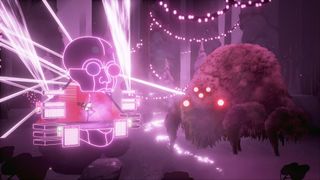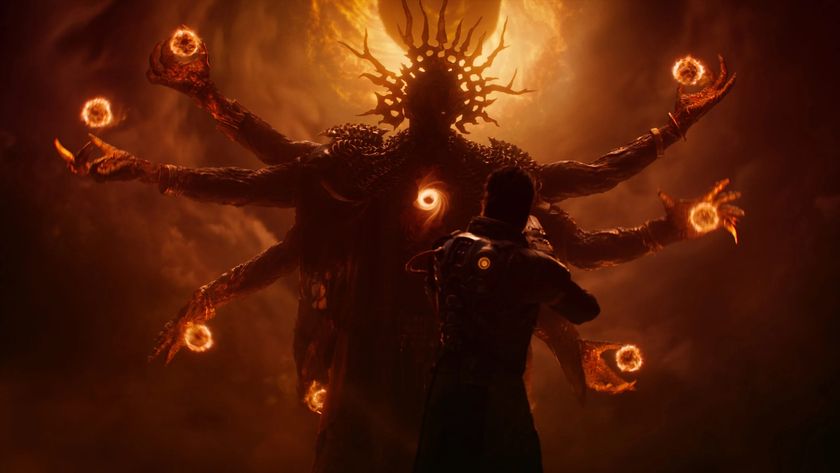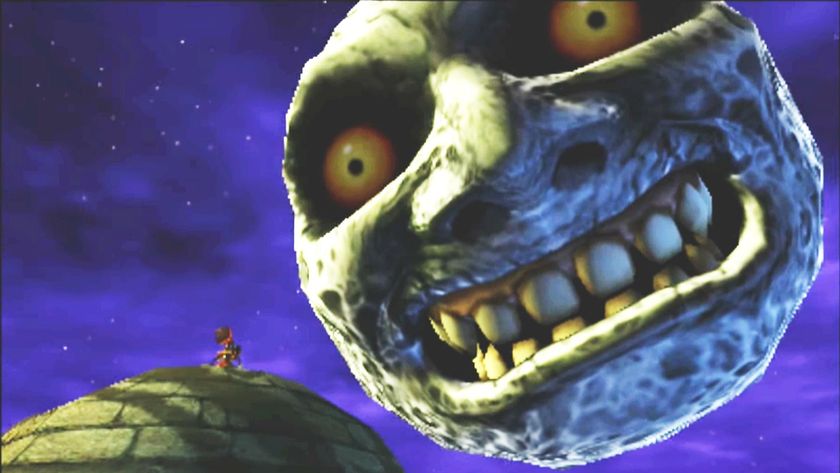
Don't come to The Artful Escape of Francis Vendetti looking for a music game. At least not the type of music game with colored notes or arrows flying down the screen where you have to push buttons in time to rack up a high score. Instead, think of Artful Escape as a sort of coming-of-age tale by way of Ziggy Stardust.
The titular Francis is a teen searching for himself - or rather, his stage persona. He comes from a family of folk musicians, who want him to follow in their footsteps. Francis, however, has other ideas. He's just not sure what they are. To find out who he is and who he is not, he sets out on an imaginative journey of musical discovery.
The game itself could best be described as a 2D platformer, though it constantly switches genres and mechanics to provide something fresh. In my 15 minutes with the game, I went from double-jumping across chasms to summoning bridges of light with the power of music, to playing a Simon Says-style game with an alien spider… buffalo… thing, to snowboarding down steep slopes.
But what sets Artful Escape apart isn't how it plays, it's everything else - the threads holding it all together.

While the game may not be an autobiographical memoir, it would be silly to say that it wasn't at least inspired a bit by true life. Developer Johnny Galvatron himself performed in a band, but was uncomfortable with the lifestyle that came with touring. Rough though those years on the road were, they gave him perspective.
Galvatron proclaims he's just as interested in the "peripheries" of music as he is in music itself. He's fascinated by the fictional worlds and personas built around artists and albums like David Bowie's Ziggy Stardust, My Chemical Romance's Black Parade, or Daft Punk's… well, pretty much all of Daft Punk.
To that end, Artful Escape focuses less on precision, more on presentation. The game makes itself known with all the flair and drama of a rock star giving a live performance to a sold out venue, both visually and aurally.
Neon crystal castles tower over snow-capped trees that twinkle like glitter. When Francis summons his guitar to communicate with the creatures he encounters, it breaks through the clouds with a roar, like a Greek god descending from Olympus. His glam-rock "stage" is an enormous wireframe human head with him standing in its mouth, and the creatures to whom he communicates are pulled straight from Guillermo del Toro's high school sketchbook.
Sign up to the 12DOVE Newsletter
Weekly digests, tales from the communities you love, and more

There's also what Galvatron calls an "extensive" character customization system. If you're trying to define who you are onstage, you want to have a unique look, after all. Unfortunately, this wasn't being shown just yet.
Meanwhile, the soundscape feels cosmic and vast, with low hums and bright strings. When Francis plays it's powerful and experimental, the type of riffing and wailing you might hear from a garage band of teens - if that garage band was playing at Madison Square Garden. It's not technical or meticulous, it's loose and evocative.
When playing the Simon Says-style call-and-response mini-game, I didn't care about hitting the notes in the same rhythm as the creature, I cared about hitting them when I felt compelled to do so. I wanted to let them echo and wobble for a bit, feeling the vibration with each strum.
Quite simply: the game makes a hell of a first impression, even in its very early state. Francis may not have himself figured out yet, but I'm eager to help him get there.
Sam is a former News Editor here at GamesRadar. His expert words have appeared on many of the web's well-known gaming sites, including Joystiq, Penny Arcade, Destructoid, and G4 Media, among others. Sam has a serious soft spot for MOBAs, MMOs, and emo music. Forever a farm boy, forever a '90s kid.
Most Popular







